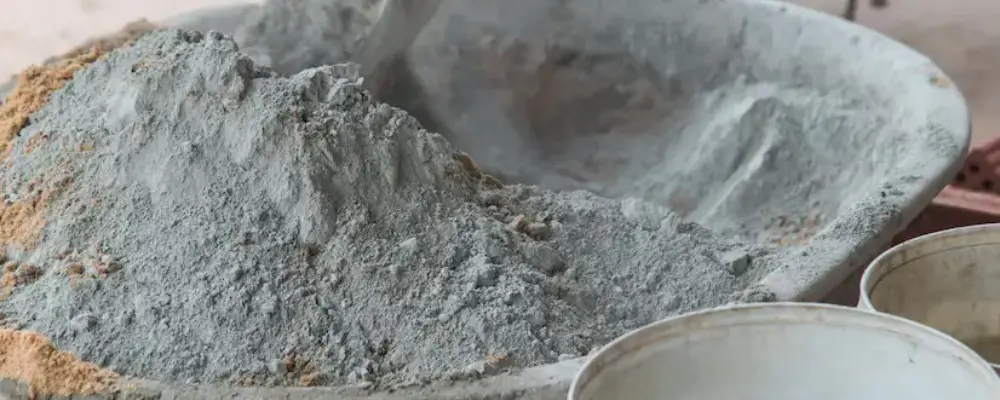Concrete is a base material that is primarily used in construction works. The cement feasibility depends on versatility, strength, and durability. Among different types of concrete, M30 is commonly used because of its stability and workability.
M30-grade concrete is characterized by its comprehensive strength, which must achieve 30 MPa after twenty-eight days of curing. The strength is usually measured in megapascal. This blog provides details about the importance of aggregate and M30-grade concrete.
Detailed Composition of M30 Grade Concrete
The general ratio of mixing for M30-grade concrete is 1:0.75:1.5, Which is 0.75 parts of sand, one part of cement, and 1.5 parts of aggregate. The detailed mixture of the cement is explained below:
Cement
Cement is an adhesive that holds the sand and aggregates together. For M30 concrete, the minimum cement content is 340 kg/m3. The content can differ depending on the type of work and its requirements.
Sand (fine aggregates)
Sand is a type of aggregate. Sand aggregates fill up the space between coarse and cement. The general role of sand is to improve the workability of the concrete mix and increase its strength.
- Sand Type: The type of sand that is used in M30 is river sand. The characteristics of the M30 sand should be that it is free from impurities, clean, and has a good gradation, ensuring strength and workability.
- Sand Content: The proportion of sand usually comprises 30 to 40 percent of the overall aggregate volume, varying according to workability and mix design.
Aggregates (Coarse Aggregate)
Coarse aggregate is the major component of the concrete. This gives stability and strength to the aggregates. The shape, size, and type of aggregate influence the properties of concrete.
- Aggregate Type: In the M30 grade concrete, gravel or crushed stone is primarily used. The aggregate must be clean, angular, and free from dust and organic material.
- Aggregate Size: The primary size of coarse aggregate is around 20 mm. However, the size of the aggregates can vary between 10 mm and 12.5 mm for M30-grade concrete, depending on the application and workability.
- Content of the Aggregate: Coarse aggregates typically make up 60 to 70 percent of the total volume of M30-grade concrete. The proportions can vary based on the specific mix design needed to achieve the desired workability.
Water
Water is the basic element in the concrete mix. When water is added, the cement reacts with it and binds the aggregates. The quality of water impacts the final strength of the concrete.
- Cement-Water Ratio: The strength and durability of concrete depend on the ratio of water used. The cement-water ratio usually ranges between 0.40 and 0.45. Reduced workability can be observed if the ratio is low, and if the ratio peaks up, then the strength will be decreased.
- Water Quality: The water used for mixing should be of drinkable quality. It should be free from contamination.
Mix Design of M30 Grade Concrete
The mix design includes careful calculation of the proportion of aggregate, sand, and water. The mix design described below is according to the Indian Standard Code IS 10262:2019.
Steps in Mixing
The steps followed in the mixing of the components are explained below:
Mean Target Strength: The mean target strength is the anticipated total strength that a concrete achieves on the twenty-eighth day. The formula for calculating this is:
Target mean strength = characteristic strength + 1.65 * standard deviation
For M30-grade concrete, assuming a standard deviation of 5 MPa, the target mean strength is calculated as follows:
Mean target strength=30 MPa+1.65×5 MPa=38.25 MPa
Water-Cement Ratio Selection: The water-cement ratio is determined depending on the target mean strength and required workability. The cement-water ratio is typically between 0.40 and 0.45.
Cement Content Calculation: The general content of the cement is based on the required water content and the water-to-cement ratio. However, the minimum cement content is 340 kg/m3.
Aggregate Calculation: The total aggregate content is calculated via specific gravity and desired workability. Hence, the quantity of coarse aggregate differs depending on the required strength.
Trial Mix: A trial mix should be conducted frequently to make sure the desired composition has been achieved before applying them directly to the construction.
Applications of M30 Grade Concrete
There are several applications of M30-grade concrete, and some of the applications are listed below:
Reinforced Concrete Structures
M30 is primarily used in columns, slabs, foundations, and beams. It has high durability and strength, making it suitable for load-bearing applications and long-term performances.
Flyovers and Bridges
The high durability and strength of M30-grade concrete make it a suitable material for flyovers and bridges. These structures need concrete that can withstand varying environmental conditions.
Industrial Floors
M30-grade concrete is favored for industrial flooring due to its durability and ability to withstand wear and heavy loads, commonly found in warehouses and industrial settings.
Roads and Pavements
Due to its durability and strength, M30-grade concrete is used in the construction of roads and highways.
Conclusion
M30 is an excellent material that is used in construction. Its quality is determined by the primary components used to make it, including aggregates, water, and cement. Aggregates make up the largest portion of the concrete, while water acts as the binder that holds everything together. The composition of M30 concrete can vary based on its intended use, making it important to adjust the mix accordingly for different applications.
FAQs
M30-grade concrete has a general mix ratio of 1:0.75:1.5.
M30-grade concrete can achieve a strength of approximately 30 MPa (30 N/mm²) on the 28th day of curing.
Generally, around 8.25 bags of cement are needed for 1 cubic meter of M30-grade concrete.

